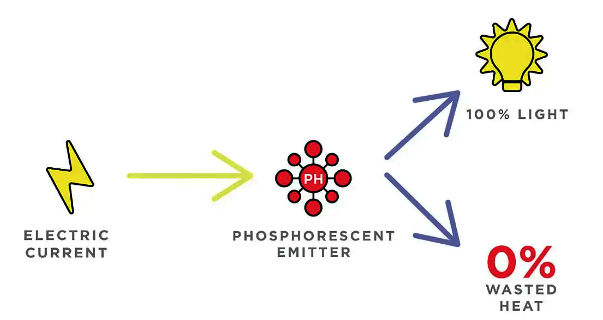Phosphorescent blue technology that can reportedly improve the performance and efficiency of OLED displays is being reviewed by both LG Display and Samsung Display, according to its main supplier.

Universal Display, a key supplier of materials to the OLED display industry, recently revealed it has cracked a 20-year puzzle on the difficulty of manufacturing blue phosphorescent material at scale. The company said last November that it was on track to commercialize phosphorescent blue emitters by the end of 2024, with the technology possibly appearing in TVs the year after. Now, it says both LG Display and Samsung Display are looking more closely at its recent innovation.
"We plan to mass-produce them from 2024," Mike Hack, vice president of Universal Display , told Korean website ETNews. "Changing the blue OLED from fluorescence to phosphorescence can increase the luminous efficiency by 4 times."
Today’s OLED TVs rely on two kinds of emitting materials, including phosphorescent for red and green light, and fluorescent to create blue light. However, the fluorescent material is known to be very inefficient, and only 25% of the power put into it ends up as light.
So Universal Display has been working towards using a combination of red, green and blue phosphorescent, as doing so would enable it to deliver 100% efficiency for OLED panels. However, it had struggled to refine the blue phosphorescent technology, until recently. Universal Display hopes to begin supplying customers including LG Display and Samsung Display with its blue “PHOLED” materials by early 2024
The performance gains this development will deliver depends on the exact nature of the OLED technology in question. LG Display’s OLED panels are based on WOLED, and use multiple layers of OLED materials, while Samsung Display manufactures QD-OLED panels that use fluorescent blue OLEDs and quantum dot converters for red and green. Samsung Display also used a green phosphorescent OLED material in its stack, but that’s not used for QD conversion.
It remains unclear when blue PHOLED will be ready for use in consumer OLED TVs. Any decision will rest with LG Display, Samsung Display and other panel makers, such as China’s BOE. All Universal Display would say is that the two Korean firms are both reviewing its technology.
"The specific application schedule is to be determined by Samsung Display and LG Display," said Mike Hack. "We plan to provide it to our customers at a reasonable price."
Universal Display has not revealed how it has managed to achieve its breakthrough, and there’s no word on the lifespan of blue PHOLED panels. However, it seems safe to assume that the future of OLED TV is definitely looking a lot brighter.
This year’s OLED TVs are already set to benefit from a big improvement in brightness, with LG Display including Micro Lens Array technology in its most advanced OLED panels. Meanwhile, Samsung Display says it has improved the design of its QD-OLED panels to deliver higher brightness and efficiency, too.